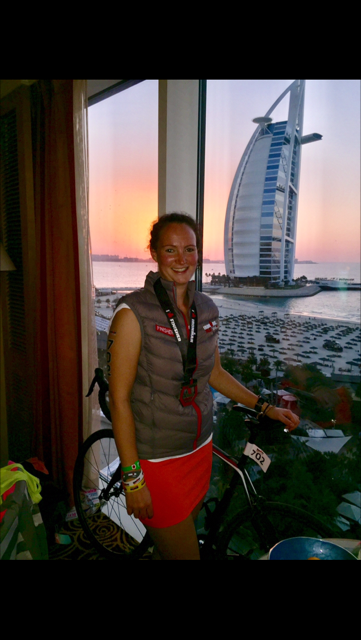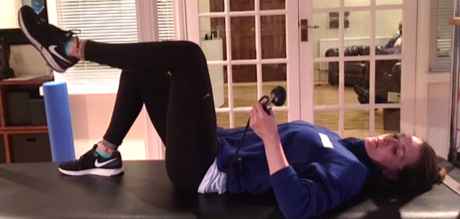


The 27th January 2017, will forever be the day I completed my first Half Iron Man triathlon. The biggest physical achievement but also most humbling experience of my life so far. Having always been into team sports growing up triathlon was something completely foreign to me but following a conversation with a friend almost exactly a year ago I decided to give it a go. I started with a sprint distance triathlon (750m swim, 20km bike, 5km run) in June 2016, then another in August and then decided to jump in the deep end and enter the Half Iron Man 70.3 in Dubai. (1.9km swim, 90km bike, 21km run.) A massive jump from what I had done previously, but I love a challenge… and what doesn’t kill you makes you stronger right?
So with only 4 and a half months to train I got straight to it. My eating habits changed, I was now eating to fuel my body and empty calories became a definite but difficult no-no. I had previously had a consultation with our nutritionist Dr Zeeba, so went back to following the diet plan she had designed for me; which made huge differences in both my energy levels, ability to train at the intensity necessary but also my ability to recover from the hard sessions. I was training hard 6 days a week with a mixture of open water and pool swims, bike and run sessions as well as some heavy weight sessions. Training was going really well, I was feeling motivated and positive, my body was changing shape and I was noticing big differences in strength and fitness…. Then 13 weeks before the date of the race following an accident at the gym I was sat in Epsom General A&E fearing a broken ankle.
Those few hours in A&E felt like weeks, I thought that was it, all my hard work had been for nothing and I wouldn’t be on that start like come January. As it turned out it was only a nasty sprain and as soon as I heard the words ‘no fracture’ from the consultant I was formulating my rehab programme in my head.
After a week of complete rest, ice, elevation and compression I was able to squeeze a still very swollen ankle into my bike shoe and get out and cycle. Soon after I took to the pool and was able to swim with heavy strapping but running was going to be a no go for some time. From week one under Paul’s recommendation I was using the infra- red laser we have at the clinic 3 times a week to help reduce the swelling and target the immune response to the injury more locally to the damaged ligaments. Regular treatment from Paul (not always comfortable I might add) in combination with a rigorous stretching and strengthening regime and continuing to build fitness in the pool and on the bike is I am convinced what got me to that start line.
The feeling I had lining up on the start line is something that will stay with me forever. The months of training, coming through the injury and hard work and support from friends and family had all come down to this. So many people had said to me in the lead up ‘oh all the hard work is done now, just go out and enjoy it’ and I somehow hadn’t quite believed them… but they were so right. All the training was done, my fitness was there it just had to go out there and do it. My goal had been to try and complete the race in under 7 hours, but considering the state my ankle had been in just 13 weeks before I would have been happy just to finish in one piece! As it turns out the ankle was fine! And I completed the whole thing in 6hours 24minutes, absolutely exhausted and elated!!
It was the most incredible experience, tough but incredible. One I would absolutely recommend to anyone thinking of having a go. The amount of support from fellow athletes, organisers and spectators was like nothing I’d ever experienced before. I met people of all shapes, sizes, ages, races and nationalities in Dubai, all with a common interest for health, exercise and passion for triathlon. Definitely an experience I will never forget.
Onwards and upwards though and onto the next thing.
I really believe you’ve got to push and challenge yourself in life; whether it be physically, mentally, at home or at work. If not we all stand still. Challenge means change and change means progress.
Lydia










